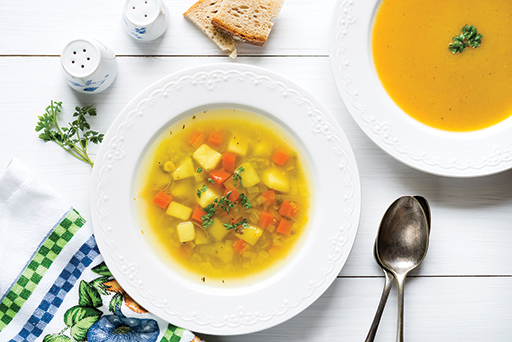Proportional problem 1: Soup
Here is a recipe for vegetable soup (Figure 17).
Vegetable soup (serves 2)
- 200 g chopped mixed vegetables (e.g. onion and carrot)
- 300 g potato
- 700 ml vegetable stock
- 1 tablespoon olive oil.
Zoë makes the soup using 600 g of mixed vegetables.
What weight of potato should she use?
Activity _unit4.2.6 Activity 13 Reflecting
Look at this learner’s incorrect response below.
- Zoe needs 200 g of chopped vegetables in the original recipe.
- Now she needs 600 g of chopped vegetables.
- 200 g + 400 g = 600 g
- She needed to add 400 g of chopped veg, so she must need to add 400 g of potato.
- So, it must be 300 g + 400 g = 700 g of potatoes.
How can you explain the thinking behind this approach?
Discussion
This is a common approach to this type of problem, known as the constant difference strategy. The learner seems to be thinking in absolute terms. They have identified that the difference between the amount of veg and potato in the original recipe is 400 g, so have kept this difference constant by adding 400 g to the new amount of veg, rather than thinking about the relationship between the ingredients. This is an example of additive reasoning in place of multiplicative reasoning, which was discussed in Section 1 of week 3.
It is challenging for learners to identify when they should be thinking proportionally rather than additionally. Using diagrammatic representations of ratios and having discussions related to the context of the problem can support learners in moving from additive to multiplicative reasoning.

